This article was medically reviewed by Sarah Gehrke, RN, MS. Sarah Gehrke is a Registered Nurse and Licensed Massage Therapist in Texas. Sarah has over 10 years of experience teaching and practicing phlebotomy and intravenous (IV) therapy using physical, psychological, and emotional support. She received her Massage Therapist License from the Amarillo Massage Therapy Institute in 2008 and a M.S. in Nursing from the University of Phoenix in 2013.
There are 13 references cited in this article, which can be found at the bottom of the page.
This article has been viewed 42,083 times.
You will probably want a wound to heal quickly for a variety of reasons. When the wound first occurs, make sure to clean it well. Dressing the wound properly will protect it from infections. Dressings also keep the wound moist and warm, which promotes healing. A diet rich in lean protein, leafy greens, and vitamin C may also speed up the healing process.
Steps
Starting Care with Proper First Aid
-
1Wash your hands. Turn on the faucet. Wet your hands. Lather your hands with soap and scrub them for 20 seconds. Rinse your hands with clean water. Use a clean cloth or paper towel to dry your hands.[1]
- If you do not have access to running water and soap, a hand sanitizer will do.
-
2Clean your wound. Place your wound under running water to remove dirt and debris from inside of it. Apply soap around the edges of the wound to clean around it. Keep rinsing the wound until all of the dirt and debris are removed.[2]
- Avoid rinsing your wound with isopropyl alcohol, hydrogen peroxide, and iodine, which can be too harsh.
Advertisement -
3Apply gentle pressure to stop any bleeding. If you have a minor cut, this may not be necessary. For deeper cuts, apply gentle pressure with a clean cloth or towel for 1 to 2 minutes, or until the bleeding stops. Try to keep the wound elevated until the bleeding stops as well.[3]
- Get emergency help if the bleeding does not stop after 20 minutes, the wound is deeper than 1⁄4 inch (0.64 cm), the wound is on your face, you can see bone or an organ, or if the wound is a result of a serious accident.[4]
-
4Remove lodged dirt and debris with tweezers. Clean the tweezers with alcohol. Carefully remove any dirt and debris that is lodged in your wound with the tweezers. Be careful not to push any dirt or debris further into your wound.[5]
- Use caution as bleeding may increase after the object is removed.
- If you cannot remove all of the debris with the tweezers, then make an appointment to see your doctor.
-
5Apply a thin layer of antibiotic ointment. Wash your hands after cleansing the wound and before applying antibiotic ointment. You can use Neosporin or petroleum jelly. Spread the ointment over the entire wound using your clean index finger or a cotton swab. The ointment will keep your wound moist, which promotes healing.[6]
- Essential oils like myrrh, lavender, and rosemary have healing properties that may speed up the healing process as well. Mix 1 to 2 drops of oil with petroleum jelly. Apply the ointment with your clean index finger or a cotton swab.
- Manuka honey is another alternative that may help prevent infection and aid in the healing process.
-
6Use a Band-Aid or nonstick gauze to cover the wound. Use a Band-Aid that covers the entire wound. Wrap gauze around the wound if it is near a joint or another area on your body that a Band-Aid cannot cover properly. Covering your wound will protect it from germs and dirt that may cause an infection, which will inhibit healing.[7] Take care not to get fibers from the cut gauze on your wound.
- Alternatively, cut a piece of gauze. Place the gauze on the wound and use medical tape to secure it in place.
Promoting Healing through Wound Care
-
1Change the dressing once a day. Changing your dressing daily will keep the wound clean. If the dressing becomes dirty or wet, change the dressing as soon as possible. Keep your wound covered until it is completely healed.[8]
-
2Change the dressing quickly. Wounds heal faster if they are kept moist and warm. Whenever you are changing the dressing, change it quickly to prevent drying, temperature loss, and exposure to bacteria. If you leave the wound exposed, this may cause its temperature to drop, slowing the healing process.[9]
- Keep bandages in your pocket, purse, or backpack just in case you need to change the dressing while you are out of the house.
-
3Avoid itching your wound. Your wound may become very itchy once a scab starts to form. Try to avoid itching or picking at the scab since these may reopen the wound, slowing the healing process. Relieve itchiness by applying a non-scented, moisturizing lotion around the wound.[10]
- You can also apply ice wrapped in a cloth to the wound to relieve itchiness.
-
4Avoid airing out the wound. Contrary to popular belief, airing out your wound may slow the healing process. By leaving your wound uncovered, you are exposing it to dirt and bacteria that may infect the wound. Do not remove your bandages until a scab starts to form.[11]
- Once the scab forms, you should keep the scab moist to help it heal faster.
-
5Contact your doctor if the wound becomes infected. Signs that a wound is infected include an increase in drainage or pus, the formation of thick green or brown pus around the wound, and/or a foul odor coming from the wound. If you develop a fever that lasts for more than 4 hours, or develop tender lumps in your armpits or groin, then you may have an infection.[12]
- Additionally, a wound that will not heal or shows no signs of healing over 1 to 2 weeks may be infected.
Supporting the Process with Healthy Choices
-
1Eat 4 to 5 ounces (110 to 140 g) of protein per meal. Your body uses protein to rebuild tissue. By including lean protein in your diet, you can promote faster healing of your wound.[13]
- Examples of lean protein include eggs, chicken breast, beef chuck, and beef or pork tenderloin and sirloin.
-
2Include green, leafy vegetables in your diet. Green, leafy vegetables contain vitamins and minerals that are essential to healing, such as Vitamin K and C. Include green, leafy vegetables in at least two of your meals.[14]
- Examples of green, leafy vegetables to include in your diet are spinach, broccoli, kale, collard greens, Swiss chard, and arugula.
-
3Eat vitamin C-rich foods. Vitamin C promotes collagen growth, which is essential for fast healing. Include vitamin C-rich foods in each of your meals. Foods rich in vitamin C include bell peppers, oranges, strawberries, papaya, cauliflower, Brussels sprouts, pineapple, kiwis, and mango.[15]
- You can also supplement your diet with 500 mg of vitamin C per day.
-
4Avoid foods that slow the healing process. Sugar and hydrogenated oil increase inflammation, which slows the healing process. Additionally, processed foods contain dyes and other chemicals that can slow the healing process.[16]
- Because alcohol promotes inflammation, avoid drinking alcohol while your wound is healing as well.
-
5Stay hydrated throughout the day. Dehydration can also slow the healing process. If you are male, make sure to drink 15.5 cups (3.7 l) of water per day. If you are female, make sure to drink at least 11.5 cups (2.7 l) of water per day.[17]
-
6Exercise for at least 20 minutes each day. Exercise is an important factor in the healing process since it promotes blood circulation. Having a fresh supply of blood to your wound will help it heal much faster. Walk, bike, or run for at least 20 minutes each day to promote blood circulation.[18]
- Alternatively, exercise for 30 minutes, 5 days a week.
-
7Sleep for 9 to 10 hours each night. Sleep is important because it allows your body to repair cell damage. Getting inadequate sleep can slow the healing process significantly. Go to bed at a time that will ensure at least 9 hours of sleep each night.[19]
- For example, if you wake up at 6 a.m. to go to school or work, make sure you go to sleep at 9 or 10 p.m. the night before.
-
8Avoid smoking. Smoking impairs the healing process, making it hard for your wound to heal. When you smoke, blood flow is restricted to the wound, so your body has trouble healing itself. If you want your wound to heal faster, don't smoke.[20]
Expert Q&A
-
QuestionHow long does it usually take to heal?
 Sarah Gehrke, RN, MSSarah Gehrke is a Registered Nurse and Licensed Massage Therapist in Texas. Sarah has over 10 years of experience teaching and practicing phlebotomy and intravenous (IV) therapy using physical, psychological, and emotional support. She received her Massage Therapist License from the Amarillo Massage Therapy Institute in 2008 and a M.S. in Nursing from the University of Phoenix in 2013.
Sarah Gehrke, RN, MSSarah Gehrke is a Registered Nurse and Licensed Massage Therapist in Texas. Sarah has over 10 years of experience teaching and practicing phlebotomy and intravenous (IV) therapy using physical, psychological, and emotional support. She received her Massage Therapist License from the Amarillo Massage Therapy Institute in 2008 and a M.S. in Nursing from the University of Phoenix in 2013.
Registered Nurse Healing a wound depends on many factors, especially the cause and size of the wound. Other factors include stress, nutrition, infection, oxygenation, age, hormones, diabetes, obesity, medications, alcoholism, and smoking. Wounds heal in stages. First being the scab and then tissue growth. On average tissue growth can take up to three weeks (but you must keep in mind the factors listed above).
Healing a wound depends on many factors, especially the cause and size of the wound. Other factors include stress, nutrition, infection, oxygenation, age, hormones, diabetes, obesity, medications, alcoholism, and smoking. Wounds heal in stages. First being the scab and then tissue growth. On average tissue growth can take up to three weeks (but you must keep in mind the factors listed above).
References
- ↑ https://www.cdc.gov/features/handwashing/index.html
- ↑ https://www.nhs.uk/common-health-questions/accidents-first-aid-and-treatments/how-do-i-clean-a-wound/
- ↑ https://www.uofmhealth.org/health-library/tp22233spec
- ↑ https://medlineplus.gov/ency/article/000043.htm
- ↑ https://www.mayoclinic.org/first-aid/first-aid-cuts/basics/art-20056711
- ↑ https://www.mayoclinic.org/first-aid/first-aid-cuts/basics/art-20056711
- ↑ https://www.betterhealth.vic.gov.au/health/conditionsandtreatments/wounds-how-to-care-for-them
- ↑ https://mydoctor.kaiserpermanente.org/ncal/structured-content/Health_Topic_Wound_Care_-_Surgery_General.xml?co=%2Fregions%2Fncal
- ↑ https://www.betterhealth.vic.gov.au/health/conditionsandtreatments/wounds-how-to-care-for-them
- ↑ https://www.hopkinsmedicine.org/health/wellness-and-prevention/everyday-cuts-and-scrapes-how-to-prevent-scarring
- ↑ https://www.betterhealth.vic.gov.au/health/conditionsandtreatments/wounds-how-to-care-for-them
- ↑ https://www.healthline.com/health/open-wound#complications4
- ↑ https://www.uofmhealth.org/health-library/abs1199
- ↑ https://www.betterhealth.vic.gov.au/health/conditionsandtreatments/wounds-how-to-care-for-them
- ↑ https://www.betterhealth.vic.gov.au/health/conditionsandtreatments/wounds-how-to-care-for-them
- ↑ https://www.betterhealth.vic.gov.au/health/conditionsandtreatments/wounds-how-to-care-for-them
- ↑ https://www.mayoclinic.org/healthy-lifestyle/nutrition-and-healthy-eating/in-depth/water/art-20044256
- ↑ https://www.mayoclinic.org/healthy-lifestyle/nutrition-and-healthy-eating/in-depth/water/art-20044256
- ↑ https://www.mayoclinic.org/healthy-lifestyle/adult-health/expert-answers/how-many-hours-of-sleep-are-enough/faq-20057898
- ↑ https://www.ncbi.nlm.nih.gov/pubmed/1323208
- ↑ https://www.betterhealth.vic.gov.au/health/conditionsandtreatments/wounds-how-to-care-for-them
About This Article
To heal a wound fast, change the dressing once a day to keep it clean and warm. When changing the dressing, work quickly so the wound doesn’t have time to dry or be exposed to bacteria. Once the scabbing process begins, the wound may become itchy, but avoid scratching as this can reopen the affected area. In addition to caring for your wound directly, promote healing by eating 4 to 5 ounces of protein per meal and including green, leafy vegetables in your diet. Also, get sufficient amounts of sleep to allow your body to repair the cell damage. For more tips from our Medical co-author, including how to exercise to promote healing, keep reading!

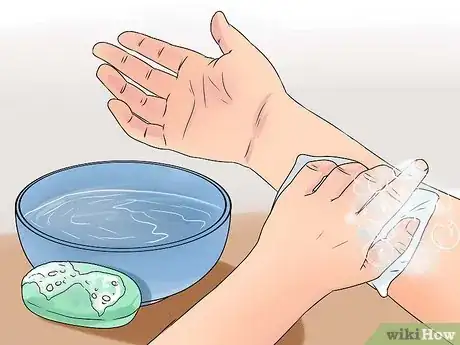
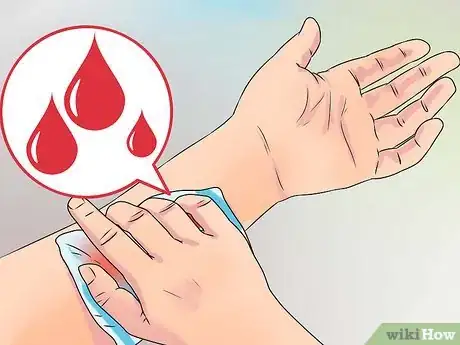
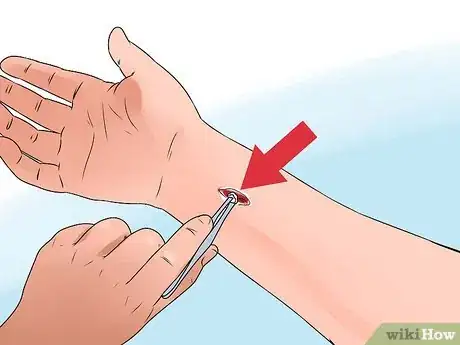
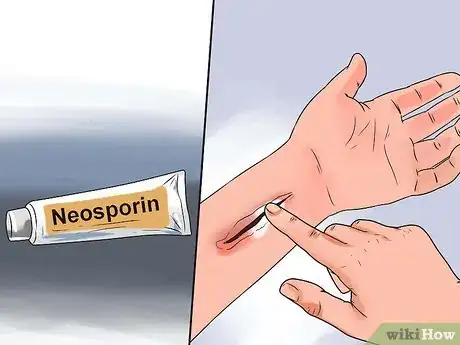


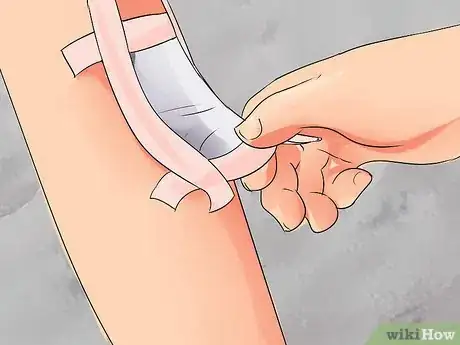






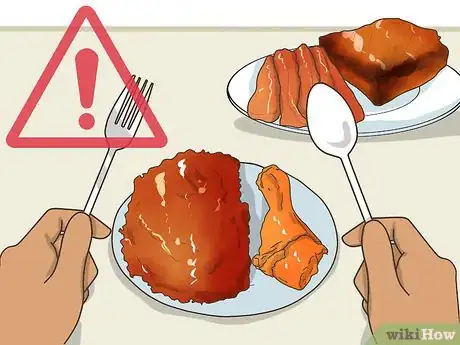




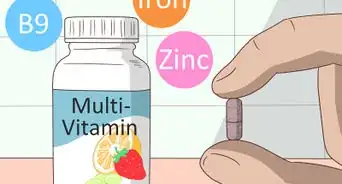
-Step-10-Version-2.webp)
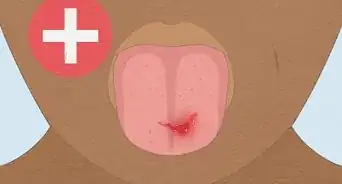


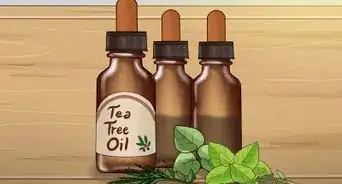
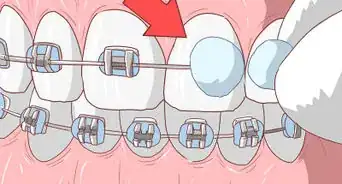
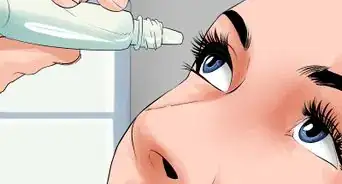

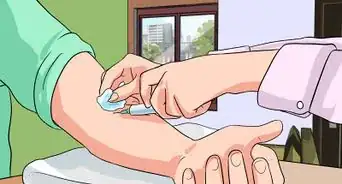










-Step-10-Version-2.webp)





































Medical Disclaimer
The content of this article is not intended to be a substitute for professional medical advice, examination, diagnosis, or treatment. You should always contact your doctor or other qualified healthcare professional before starting, changing, or stopping any kind of health treatment.
Read More...